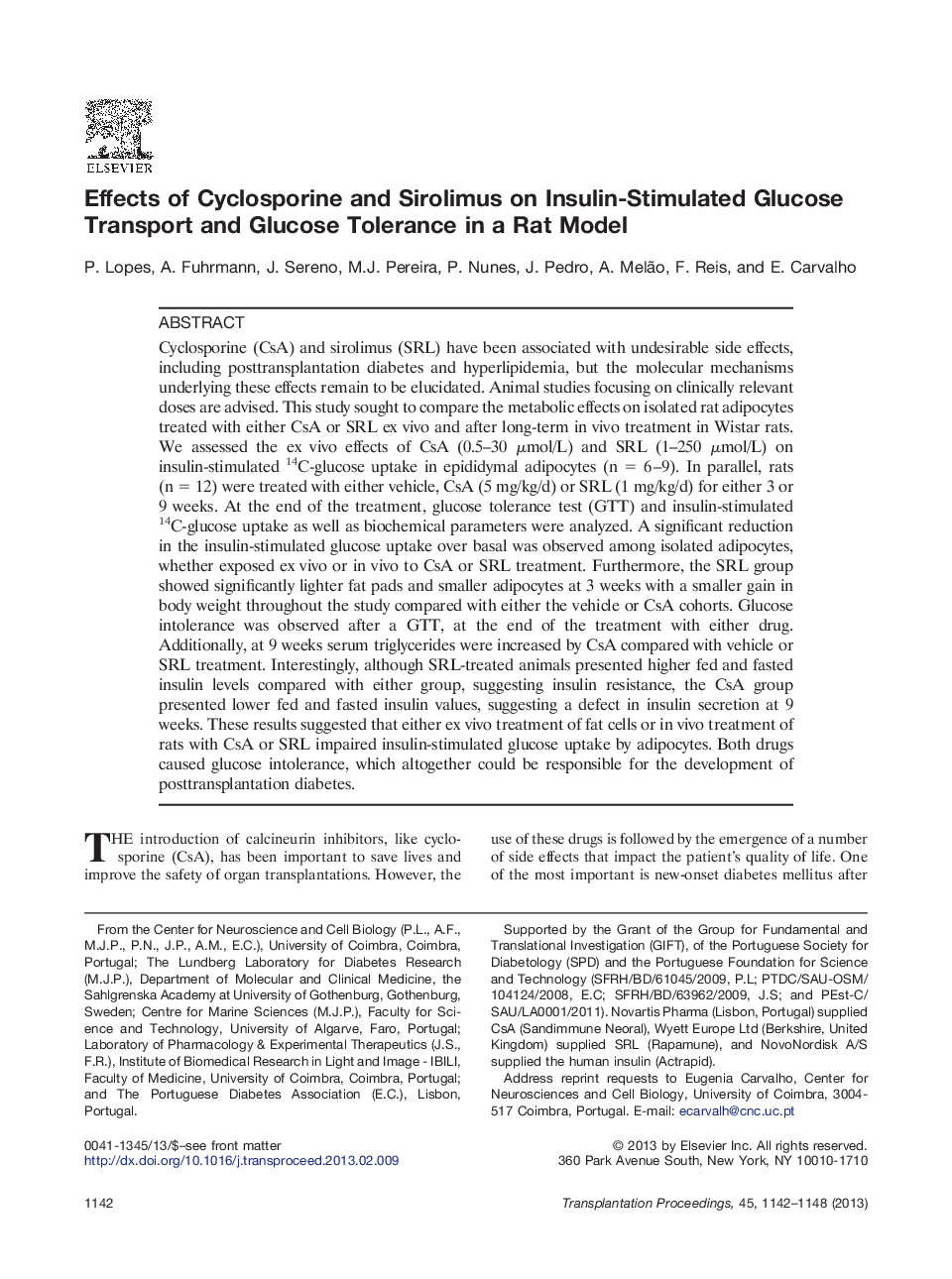| Article ID | Journal | Published Year | Pages | File Type |
|---|---|---|---|---|
| 6246677 | Transplantation Proceedings | 2013 | 7 Pages |
Cyclosporine (CsA) and sirolimus (SRL) have been associated with undesirable side effects, including posttransplantation diabetes and hyperlipidemia, but the molecular mechanisms underlying these effects remain to be elucidated. Animal studies focusing on clinically relevant doses are advised. This study sought to compare the metabolic effects on isolated rat adipocytes treated with either CsA or SRL ex vivo and after long-term in vivo treatment in Wistar rats. We assessed the ex vivo effects of CsA (0.5-30 μmol/L) and SRL (1-250 μmol/L) on insulin-stimulated 14C-glucose uptake in epididymal adipocytes (n = 6-9). In parallel, rats (n = 12) were treated with either vehicle, CsA (5 mg/kg/d) or SRL (1 mg/kg/d) for either 3 or 9 weeks. At the end of the treatment, glucose tolerance test (GTT) and insulin-stimulated 14C-glucose uptake as well as biochemical parameters were analyzed. A significant reduction in the insulin-stimulated glucose uptake over basal was observed among isolated adipocytes, whether exposed ex vivo or in vivo to CsA or SRL treatment. Furthermore, the SRL group showed significantly lighter fat pads and smaller adipocytes at 3 weeks with a smaller gain in body weight throughout the study compared with either the vehicle or CsA cohorts. Glucose intolerance was observed after a GTT, at the end of the treatment with either drug. Additionally, at 9 weeks serum triglycerides were increased by CsA compared with vehicle or SRL treatment. Interestingly, although SRL-treated animals presented higher fed and fasted insulin levels compared with either group, suggesting insulin resistance, the CsA group presented lower fed and fasted insulin values, suggesting a defect in insulin secretion at 9 weeks. These results suggested that either ex vivo treatment of fat cells or in vivo treatment of rats with CsA or SRL impaired insulin-stimulated glucose uptake by adipocytes. Both drugs caused glucose intolerance, which altogether could be responsible for the development of posttransplantation diabetes.
